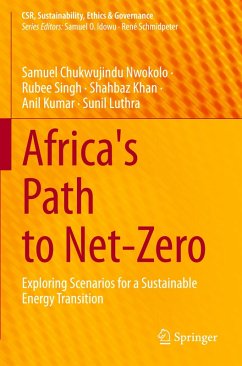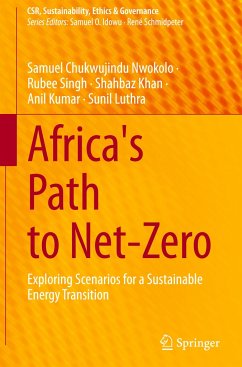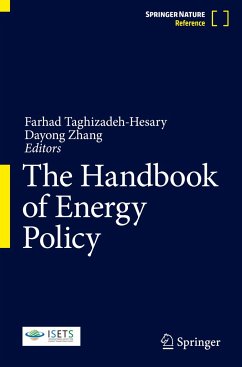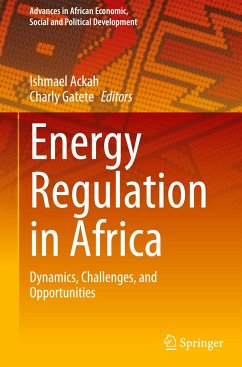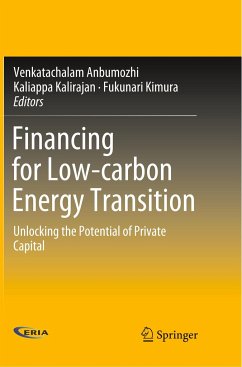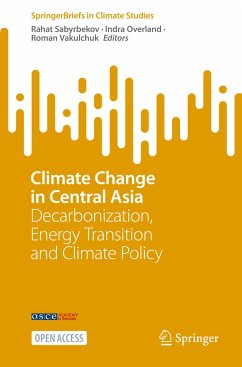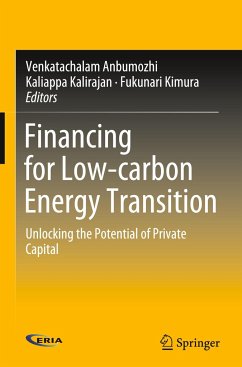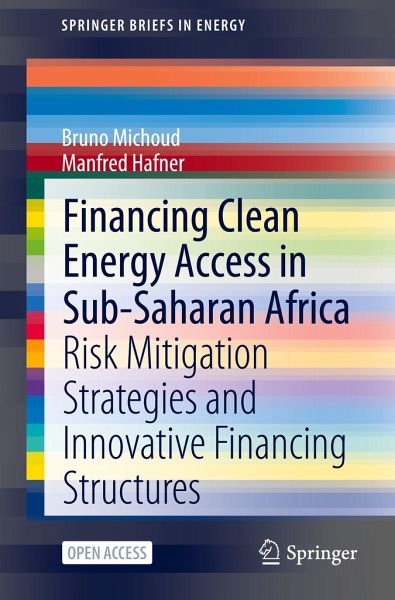
Financing Clean Energy Access in Sub-Saharan Africa
Risk Mitigation Strategies and Innovative Financing Structures
Versandkostenfrei!
Versandfertig in 6-10 Tagen
23,99 €
inkl. MwSt.

PAYBACK Punkte
12 °P sammeln!
This open access book analyses barriers and challenges associated with the financing of clean energy access in sub-Saharan Africa. By considering various economic, financial, political, environmental and social factors, it explores the consequences of energy poverty across the region and maps the real and perceived investment risks for potential capital providers, both domestic and international. Furthermore, it analyses risk mitigation strategies and innovative financing structures available to the public and private sectors, which are aimed at leveraging capital in the clean energy sector at...
This open access book analyses barriers and challenges associated with the financing of clean energy access in sub-Saharan Africa. By considering various economic, financial, political, environmental and social factors, it explores the consequences of energy poverty across the region and maps the real and perceived investment risks for potential capital providers, both domestic and international. Furthermore, it analyses risk mitigation strategies and innovative financing structures available to the public and private sectors, which are aimed at leveraging capital in the clean energy sector at scale and fostering the creation of an enabling business and investment environment.
More specifically, the present book analyses how to (i) enhance capital allocation in projects and organisations that foster clean energy access in the region, (ii) mobilize private capital at scale and (iii) decrease the cost of financing through risk mitigation strategies. Going beyond traditional approaches, the book also considers socioeconomic and cultural aspects associated with investment barriers across the subcontinent. Moreover, it urges the public and private spheres to become more actively involved in tackling this pressing development issue, and provides policy recommendations for the public sector, including proposals for business model evolution at multilateral agencies and development institutions. It will appeal to a wide readership of both academics and professionals working in the energy industry, the financial sector and the political sphere, as well as to general readers interested in the ongoing debate about energy, sustainable development and finance.
More specifically, the present book analyses how to (i) enhance capital allocation in projects and organisations that foster clean energy access in the region, (ii) mobilize private capital at scale and (iii) decrease the cost of financing through risk mitigation strategies. Going beyond traditional approaches, the book also considers socioeconomic and cultural aspects associated with investment barriers across the subcontinent. Moreover, it urges the public and private spheres to become more actively involved in tackling this pressing development issue, and provides policy recommendations for the public sector, including proposals for business model evolution at multilateral agencies and development institutions. It will appeal to a wide readership of both academics and professionals working in the energy industry, the financial sector and the political sphere, as well as to general readers interested in the ongoing debate about energy, sustainable development and finance.





